A Japandi style living room should aim for a delightful blend of Japanese and Scandinavian design philosophies,
For me, it’s a hybrid aesthetic that combines the sophistication and simplicity of Scandi design with the tranquility of Japanese Zen-inspired spaces.
Here are the key Japandi features to keep in mind when designing your living room:
- Japandi design emphasizes clean lines, uncluttered spaces, and an overall sense of simplicity and sophistication.
- Japandi spaces typically feature a foundation of soft, earthy tones, with subtle washes of muted, nature-inspired accent colors.
- Wood, bamboo, stone, and other organic materials are used to create a connection with nature.
- Japandi design prioritizes practical, well-crafted furniture and decor items that serve a purpose and demonstrate a high level of craftsmanship.
- Japandi interiors often incorporate elements of biophilic design, such as indoor plants, fireplaces and natural light, to foster a sense of tranquility and wellbeing.
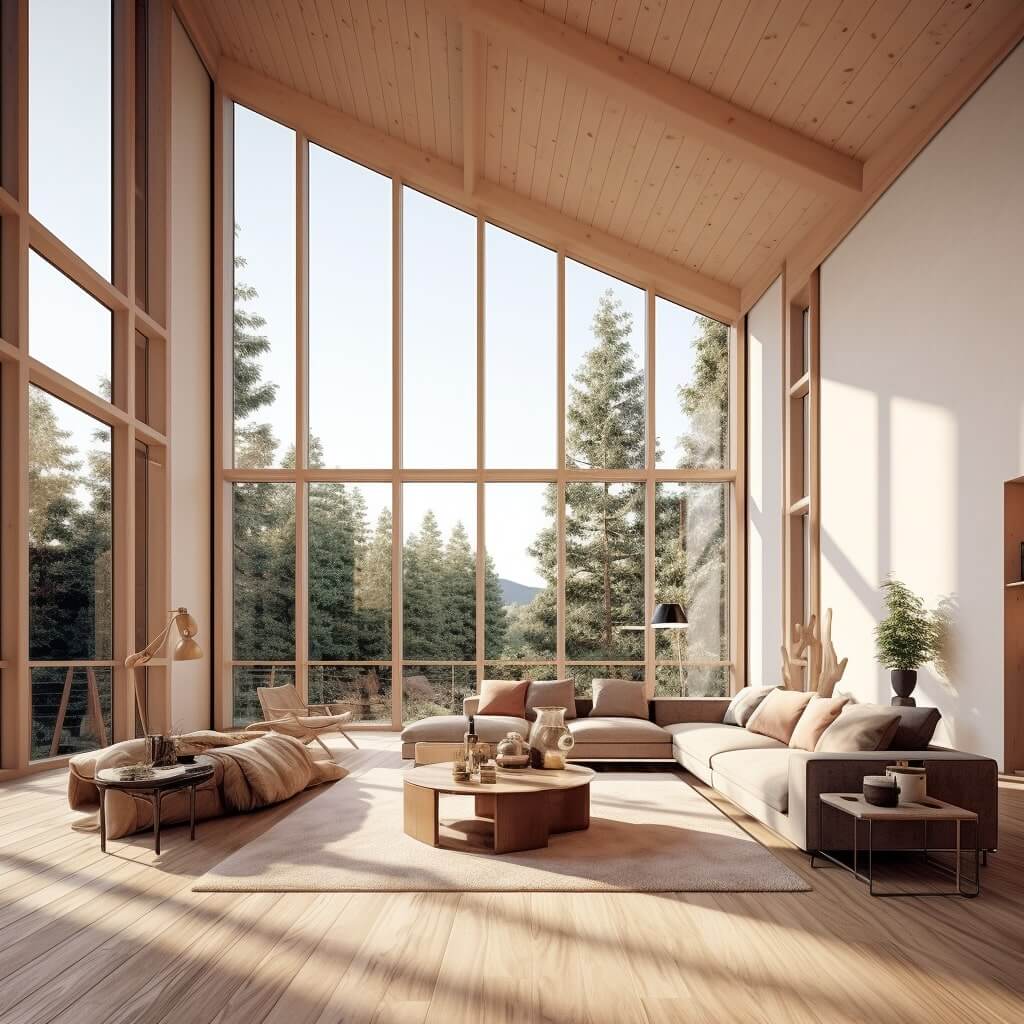
Japandi Living Room Furniture Ideas
When it comes to choosing Japandi furniture for your living room, less is definitely more.
I think the key lies in selecting functional pieces that not only serve a purpose but also exude a sense of calm and elegance.
To approach it logically: if you’re going with a minimalist style, you’re not going to want much furniture.
So, that means the furniture you do have needs to be practical, and multifunctional if possible.
I always think that it’s no good having a minimalist interior design home that drives you crazy because you have no storage space and no practicality.
So remember to prioritize practicality as well as style.
Let’s dive into some furniture ideas that can transform your living room into a Japandi haven.
Japandi furniture examples
First up, low-profile sofas and chairs.
Go for seating options that sit closer to the ground, as they create an intimate, grounded atmosphere, echoing traditional Japanese interiors.
I look for designs with clean lines and neutral tones, which complement the minimalist aesthetic of Japandi spaces.
Next, consider sleek, multi-functional Japandi coffee tables.
In Japandi design, practicality is just as important as aesthetics, but I think it’s often overlooked.
A coffee table with hidden storage or a convertible design can serve multiple purposes, making it an ideal choice for your living room.
I think timeless, wooden storage solutions, such as your Japandi TV stand, are another must-have in Japandi living rooms.
Think minimalist open shelving or sideboards with sliding doors.
I find they can keep things neat and tidy but also showcase your favourite chosen Japandi decor items.
Focus on designs that prioritize craftsmanship, and look out for the natural grain of the wood as it’s a great highlight for Japandi style rooms.
Lastly, don’t forget to incorporate minimalist, comfortable seating options.
I encourage floor cushions, poufs, and ottomans can create cozy spots for lounging while also serving as extra seating for guests.
I look for natural fabrics like linen or cotton for an authentic Japandi touch.
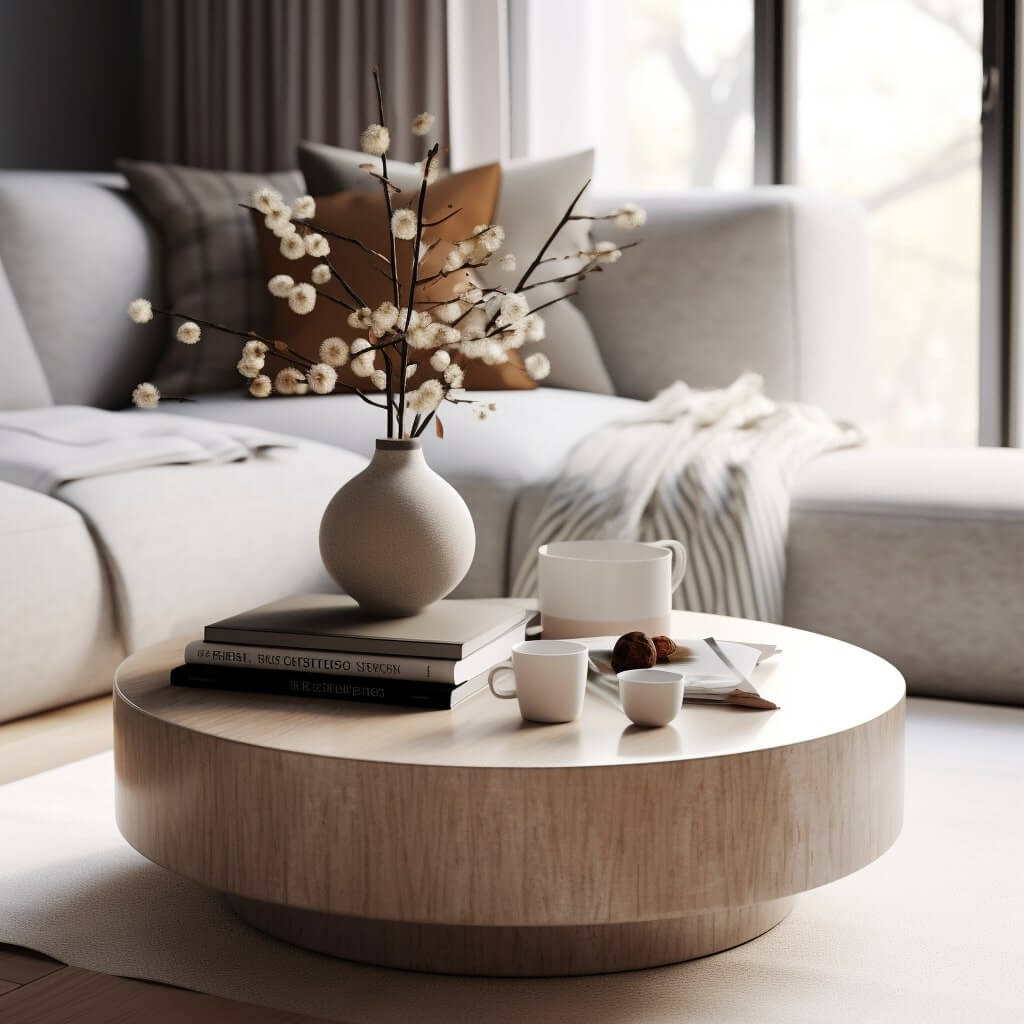
Japandi-Inspired Lighting and Accessories
In a Japandi living room, lighting and accessories set the mood.
I start with ambient lighting for a tranquil atmosphere.
Layer soft, diffused light sources like floor lamps, table lamps, or wall sconces to create a cozy, inviting glow.
You could also make a statement with pendant lights that double as sculptural art pieces.
Can you find some unique designs crafted from materials like bamboo, rattan, or ceramic?
I love these striking fixtures as they can add visual interest without overwhelming the minimalist space.
Subtle, organic decor pieces are also ideal for accessorizing your Japandi living room.
Consider adding handwoven baskets, simple wooden sculptures, or textured throw blankets, for example.
And a Japandi rug adds texture and coziness – but stick to neutral tones.
Also, I love to embrace handcrafted ceramics and textiles to give my space a personal touch.
Think about artisan-made pottery, tableware, or cushions to add character to your living room.
Remember, less is more – focus on quality over quantity!
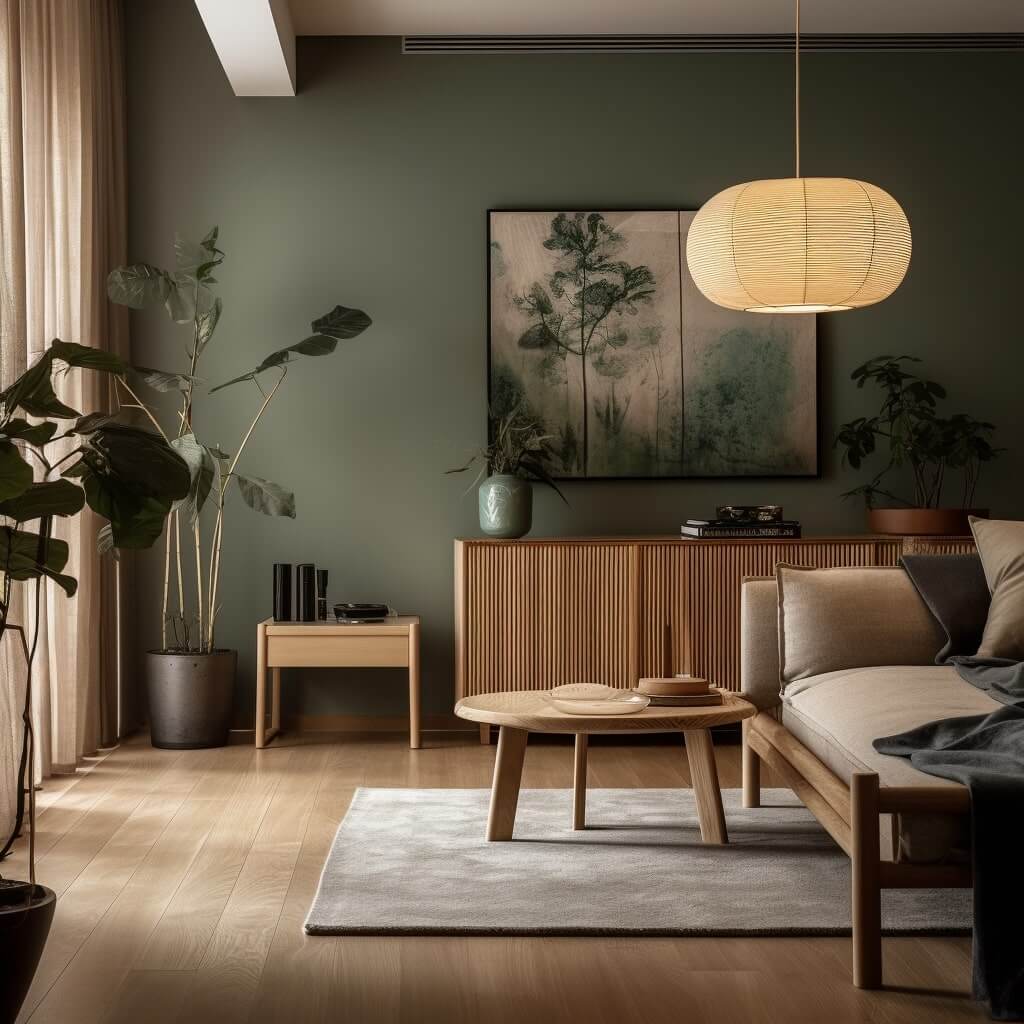
Creating a Cohesive Japandi Color Scheme
A subtle color scheme is essential for crafting a Japandi living room that feels calm and cohesive in my opinion.
Here’s how I choose the perfect Japandi palette for my spaces.
1, Begin with a foundation of neutral and earthy tones.
Soft shades of beige, gray, and white create a serene backdrop, allowing the natural textures and minimalist design to take the limelight.
2. You can then add small washes of color inspired by nature.
Think muted greens, dusty blues, or pale pinks – these accent colors can be introduced through textiles, ceramics, or Japandi style artwork. Just remember to keep it balanced and avoid overpowering your calming neutral base.
3. Finally, pay attention to the undertones of your overall chosen colors.
If anything is standing out too much or not quite fitting, I don’t worry too much.
You can always play around with your arrangement and try things in different layout to line complimentary colours together. Or try something in a different room altogether.
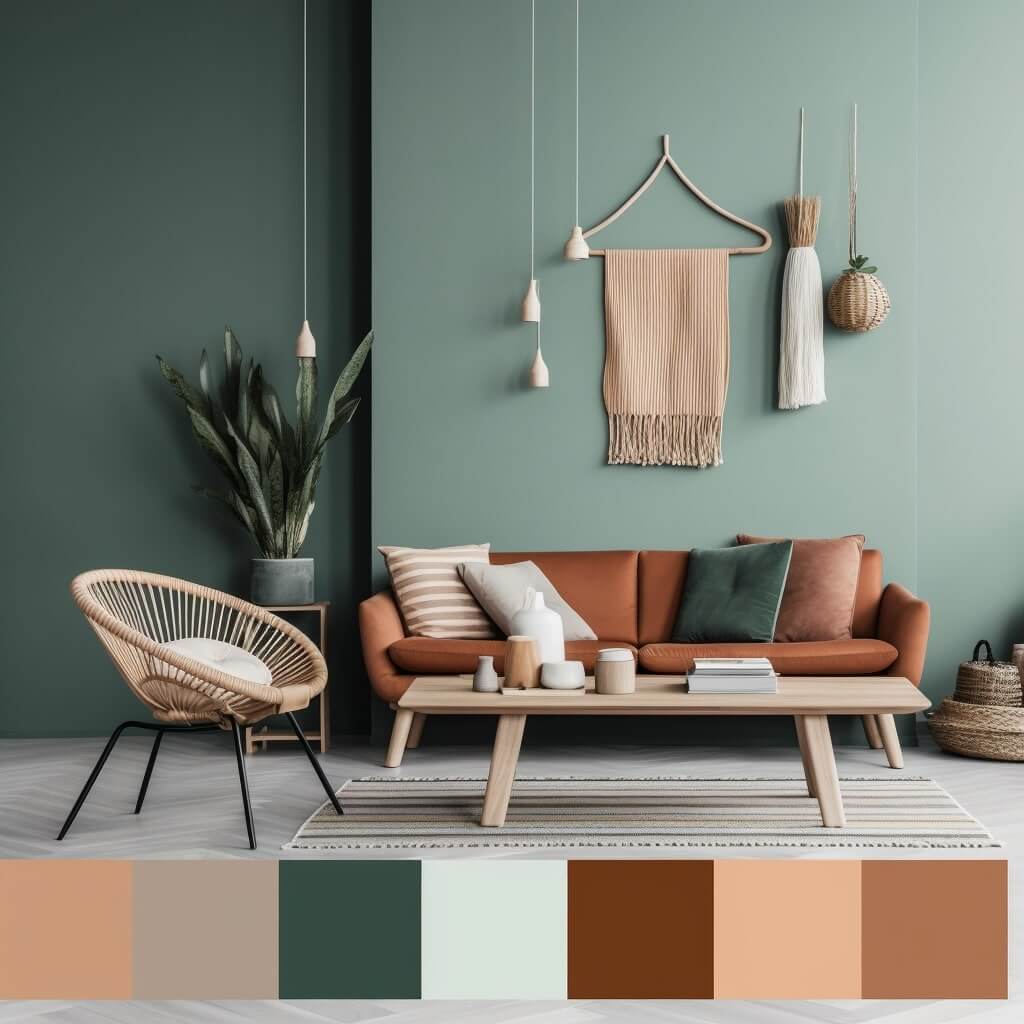
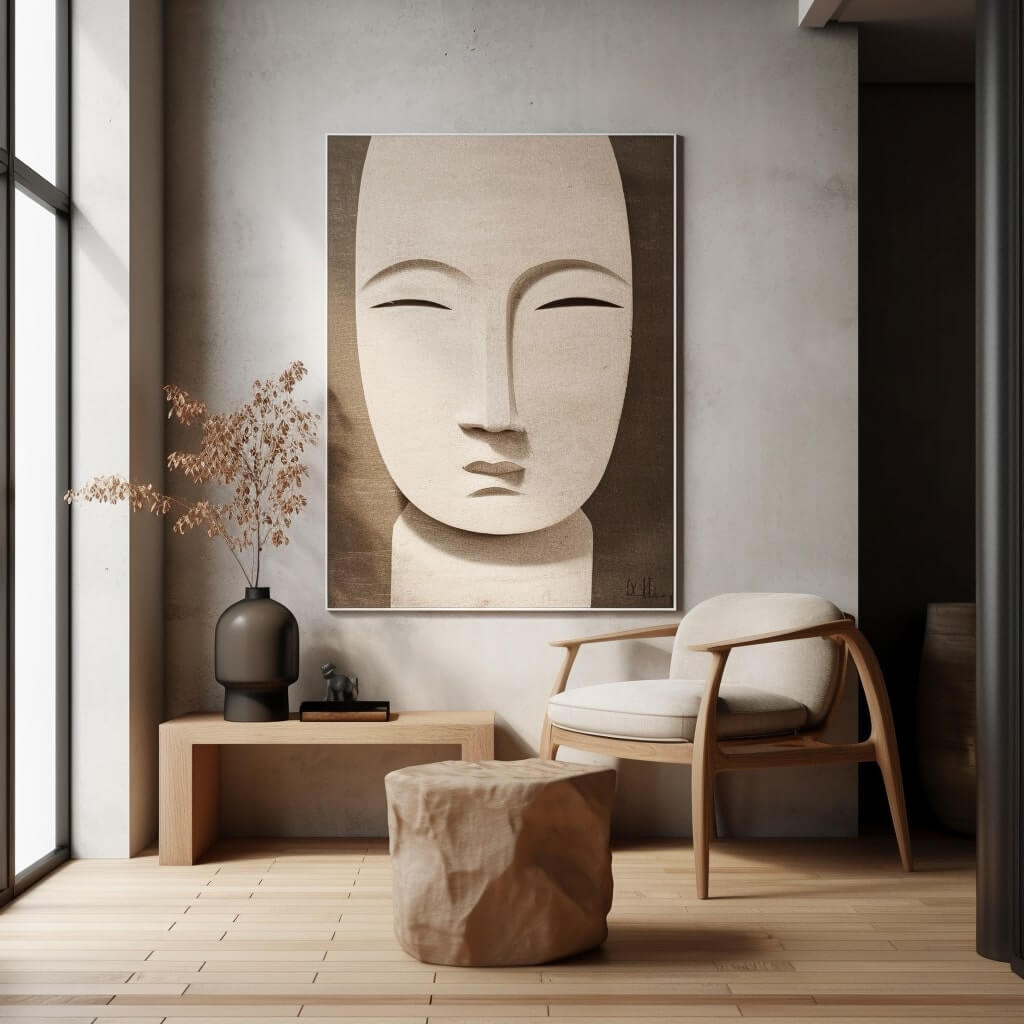
The Art of Bringing Nature Indoors
It’s great to add indoor plants to your space as way of bringing the natural world into your home.
I’m a big fan of low-maintenance succulents or lush, leafy ferns – greenery not only purifies the air but also adds vibrant, calming energy. You can really work on blending your outdoor space and your living room if your entryway leads straight into your lounge.
I gravitate towards minimalist planters and pots made from materials like terracotta or concrete to complement the Japandi aesthetic.
I find that atural elements can also be incorporated through decor and furnishings. Think wooden coffee tables, rattan baskets, or stone sculptures that showcase the raw beauty of the materials.
You can also think about the principles of biophilic design when planning your Japandi living room. It prioritizes the human-nature connection by using natural light, prioritising views of the outdoors where possible, and organic forms.
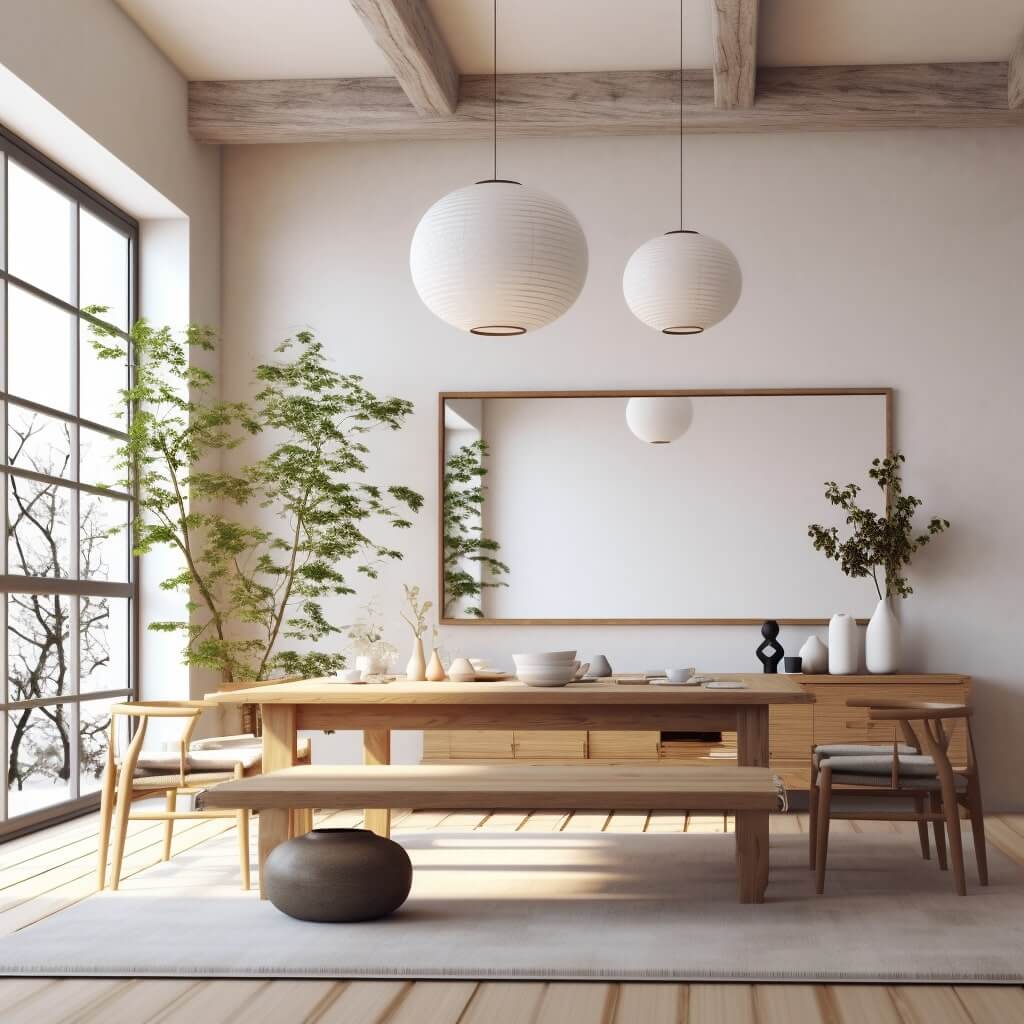
Maximizing Small Living Spaces with Japandi Design
Japandi’s emphasis on functionality makes it a great interior design style for maximizing small living spaces like flats and apartments.
I always look for multi-functional furniture that serves multiple purposes.
For example, a coffee table with built-in storage, a fold-out wall desk, or a sofa bed to make the most of your square footage. remember clean-lined designs and natural materials will maintain your Japandi aesthetic.
In terms of storage, I encourage going for wall-mounted shelves, modular storage units, or slim sideboards can provide storage without taking up much precious floor space.
You can also consider using mirrors strategically to create the illusion of a larger space.
Placing your mirror so it reflects natural light will make your living room feel more open and airy.
Simple frames in neutral tones and with natural materials are great for complementing your Japandi interior.
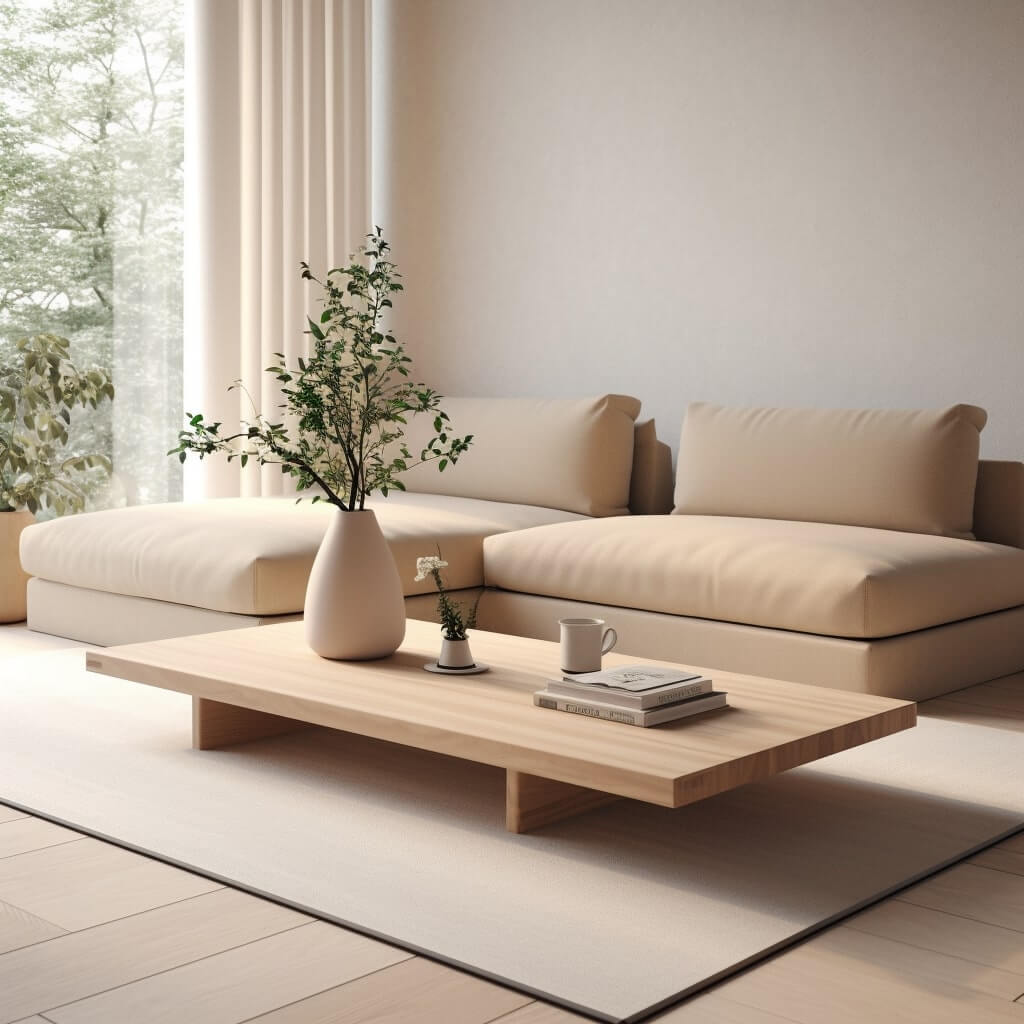
Japandi Living Room Ideas for Different Budgets
Here are some tips for furnishing a Japandi living room at various price points.
For Japandi on a budget, I focus on simplicity and resourcefulness. Visit thrift stores, flea markets, and online marketplaces.
And remember. you can also repurpose existing items, such as painting a wooden coffee table in a muted tone or reupholstering an old armchair with a neutral fabric.
Also, if you invest in versatile, multi-functional pieces that can serve various purposes it can save you money in the long run, as well as space.
Be mindful of the quality, even when on a budget, to ensure your furniture lasts longer.
When it comes to high-end Japandi living rooms, I recommend focusing on investing in timeless, quality pieces.
Search for furniture, lighting, and decor that showcase the craftsmanship and sustainability central to Japandi design.
I think the finest luxurious natural materials, such as solid wood, leather, or handwoven textiles, can create a more high-end look and feel.
You could also commission bespoke or custom-made pieces that fit your space perfectly and reflect your personal style.
Regardless of your budget, remember that Japandi design fundamentally is about making a space that you’ll love coming home to and spending time in.
FAQs
What is Japandi style decorating?
Japandi style decorating is a fusion of Japanese and Scandinavian design principles, characterized by minimalism, functionality, and a strong connection to nature.
It combines the simplicity and sophistication of Scandinavian design with the warmth and tranquility of Japanese Zen-inspired interiors.
What are the characteristics of Japandi design?
Characteristics of Japandi design include clean lines, minimalist layouts, an emphasis on craftsmanship, a neutral color palette, natural materials, and a focus on sustainability and harmony with the environment.
What colours are used in Japandi style?
In Japandi style, colors are typically neutral and earthy, with soft shades of beige, gray, and white as the foundation. Subtle pops of muted greens, dusty blues, or pale pinks can be used as accents.
What is the difference between Zen, wabi-sabi and Japandi style?
Zen design focuses on simplicity and spiritual elements, while wabi-sabi embraces imperfection and the natural aging process.
Japandi style combines elements of both, with an added emphasis on the clean lines and functionality of Scandinavian design.
What are the advantages of Japandi style?
Advantages of Japandi style include a calming and serene atmosphere, an uncluttered and functional space, a strong connection to nature, and a focus on sustainability and quality craftsmanship.
What materials are used in Japandi style?
Japandi style utilizes natural materials like wood, bamboo, stone, rattan, and linen to create a warm and harmonious connection with nature.
Where is Japandi style popular?
Japandi style is popular in various countries, including Japan, Scandinavia, and increasingly in other parts of the world due to its appealing blend of aesthetics and functionality.
What is the philosophy of Japandi?
The philosophy of Japandi centers on minimalism, functionality, craftsmanship, and a harmonious connection to nature, creating spaces that promote tranquility, wellbeing, and sustainability.
When did Japandi style come out?
Japandi style emerged into the mainstream in the early 2010s as designers and homeowners began combining elements of Japanese and Scandinavian design to create unique, hybrid interiors, but it boomed in particular during 2020.







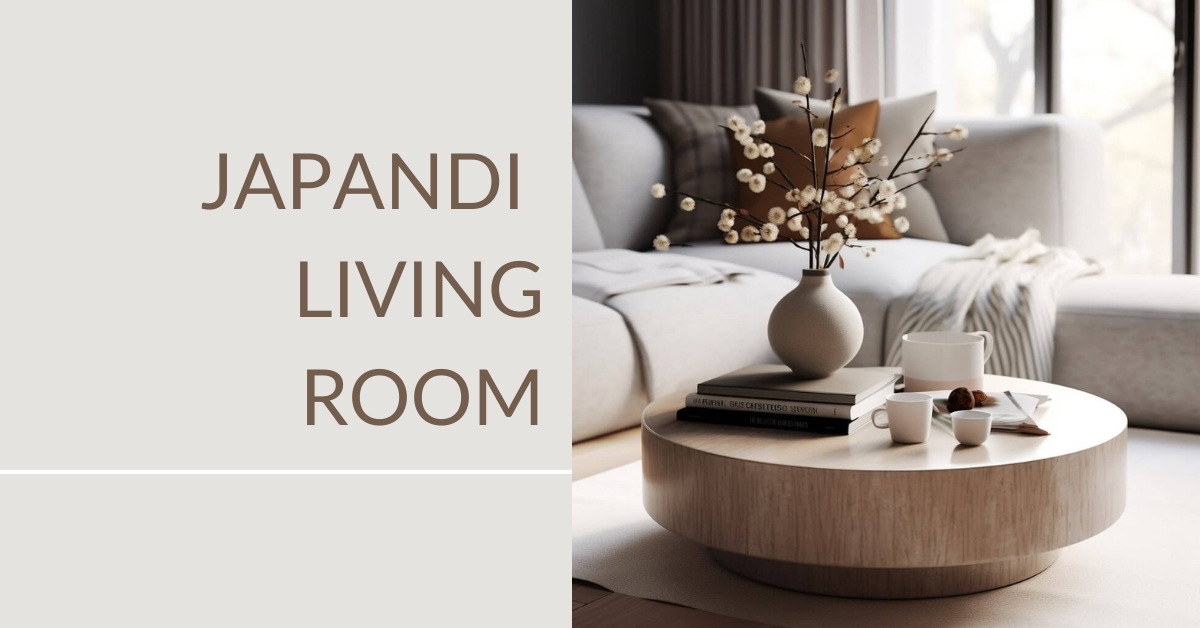
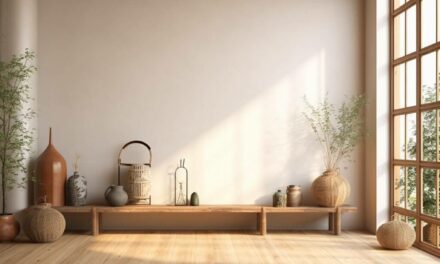
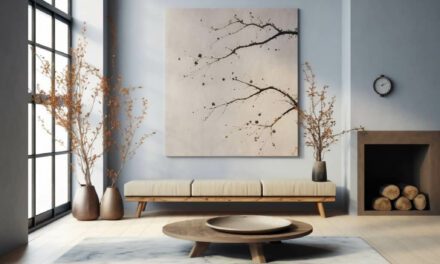


I actually wanted to thank you for these marvelous tips you are showing at this website. My extensive internet investigation has at the end of the day been recognized with awesome facts to talk about with my friends. I feel lucky to have come across the website and look forward to spend more excellent reading time here. Thanks a lot once again for all the details.
Great weblog right here! Also your website loads up very fast! What host are you the use of? Can I am getting your associate link to your host? I wish my web site loaded up as quickly as yours lol
Hi, we use Cloudways 🙂